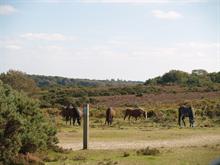Learn how to manage forage resources
Forage is plant material taken by livestock as they browse or graze. It may be grown as a crop or occur naturally.

Learn how to:
- Select appropriate plants for forage crop production
- Cultivate and maintain forage crops
- Regulate livestock access to forage plants
- Preserve forage as hay and silage